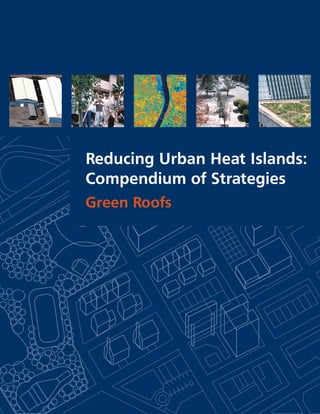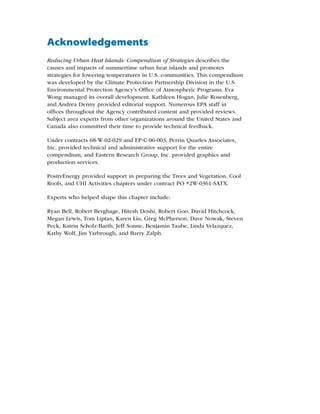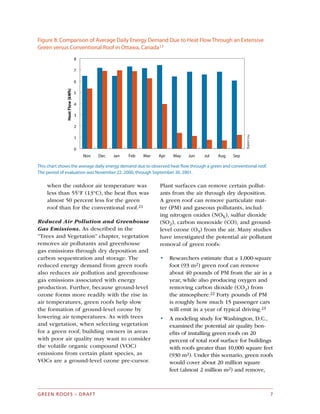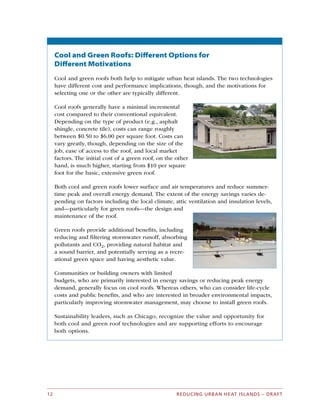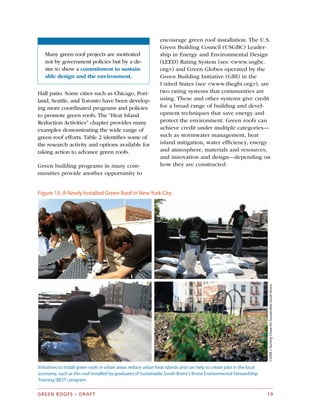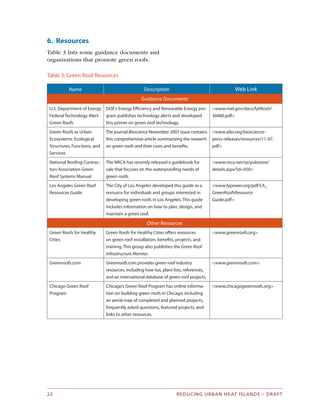This document provides information on green roofs and their ability to reduce urban heat islands. It acknowledges that roofs make up 20-25% of land cover in major US cities, presenting opportunities for green roof installation. Green roofs work by shading roof surfaces and through evapotranspiration of vegetation, which cools the air. They come in extensive and intensive varieties. Benefits include reduced energy costs, stormwater management and increased roof lifespan, while costs have come down in recent decades. The document provides details on design considerations and gives an overview of green roof initiatives and resources for further research.
